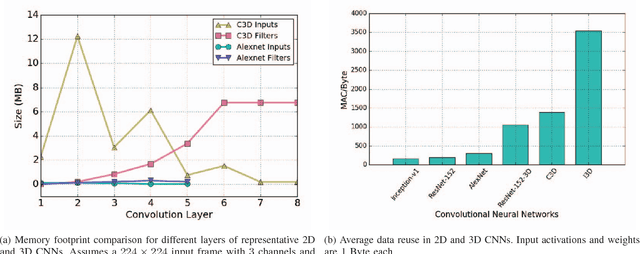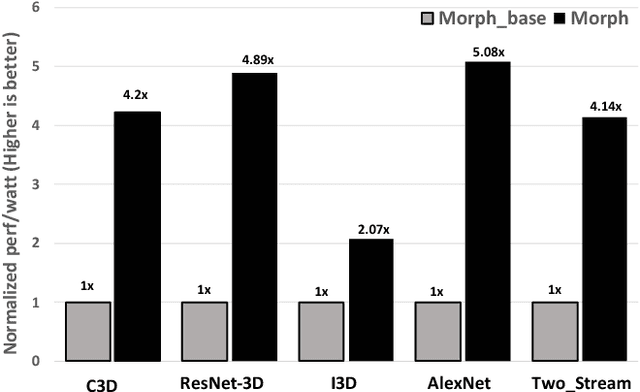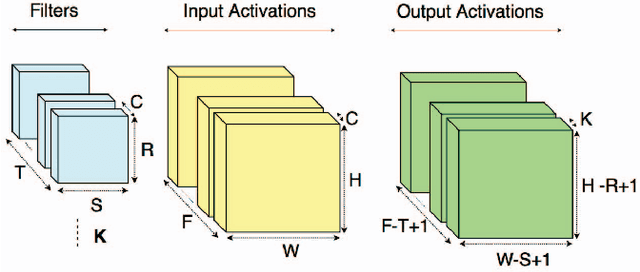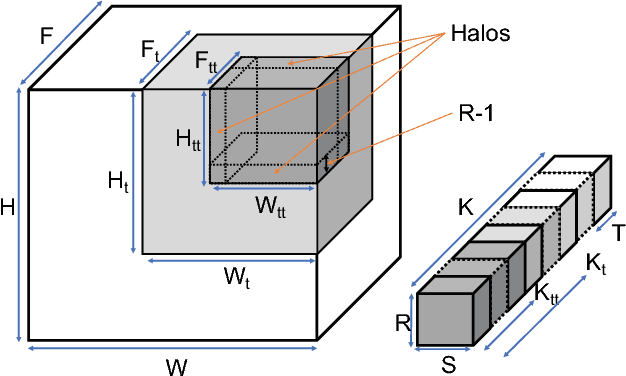Yulun Yao
Morph: Flexible Acceleration for 3D CNN-based Video Understanding
Oct 16, 2018



Abstract:The past several years have seen both an explosion in the use of Convolutional Neural Networks (CNNs) and the design of accelerators to make CNN inference practical. In the architecture community, the lion share of effort has targeted CNN inference for image recognition. The closely related problem of video recognition has received far less attention as an accelerator target. This is surprising, as video recognition is more computationally intensive than image recognition, and video traffic is predicted to be the majority of internet traffic in the coming years. This paper fills the gap between algorithmic and hardware advances for video recognition by providing a design space exploration and flexible architecture for accelerating 3D Convolutional Neural Networks (3D CNNs) - the core kernel in modern video understanding. When compared to (2D) CNNs used for image recognition, efficiently accelerating 3D CNNs poses a significant engineering challenge due to their large (and variable over time) memory footprint and higher dimensionality. To address these challenges, we design a novel accelerator, called Morph, that can adaptively support different spatial and temporal tiling strategies depending on the needs of each layer of each target 3D CNN. We codesign a software infrastructure alongside the Morph hardware to find good-fit parameters to control the hardware. Evaluated on state-of-the-art 3D CNNs, Morph achieves up to 3.4x (2.5x average) reduction in energy consumption and improves performance/watt by up to 5.1x (4x average) compared to a baseline 3D CNN accelerator, with an area overhead of 5%. Morph further achieves a 15.9x average energy reduction on 3D CNNs when compared to Eyeriss.
 Add to Chrome
Add to Chrome Add to Firefox
Add to Firefox Add to Edge
Add to Edge